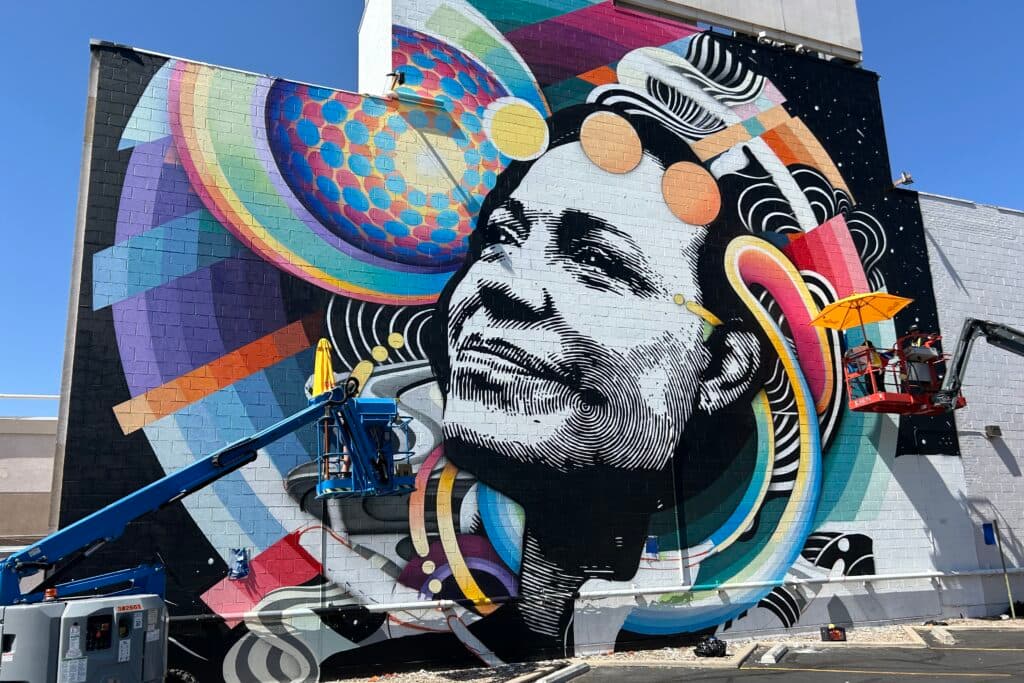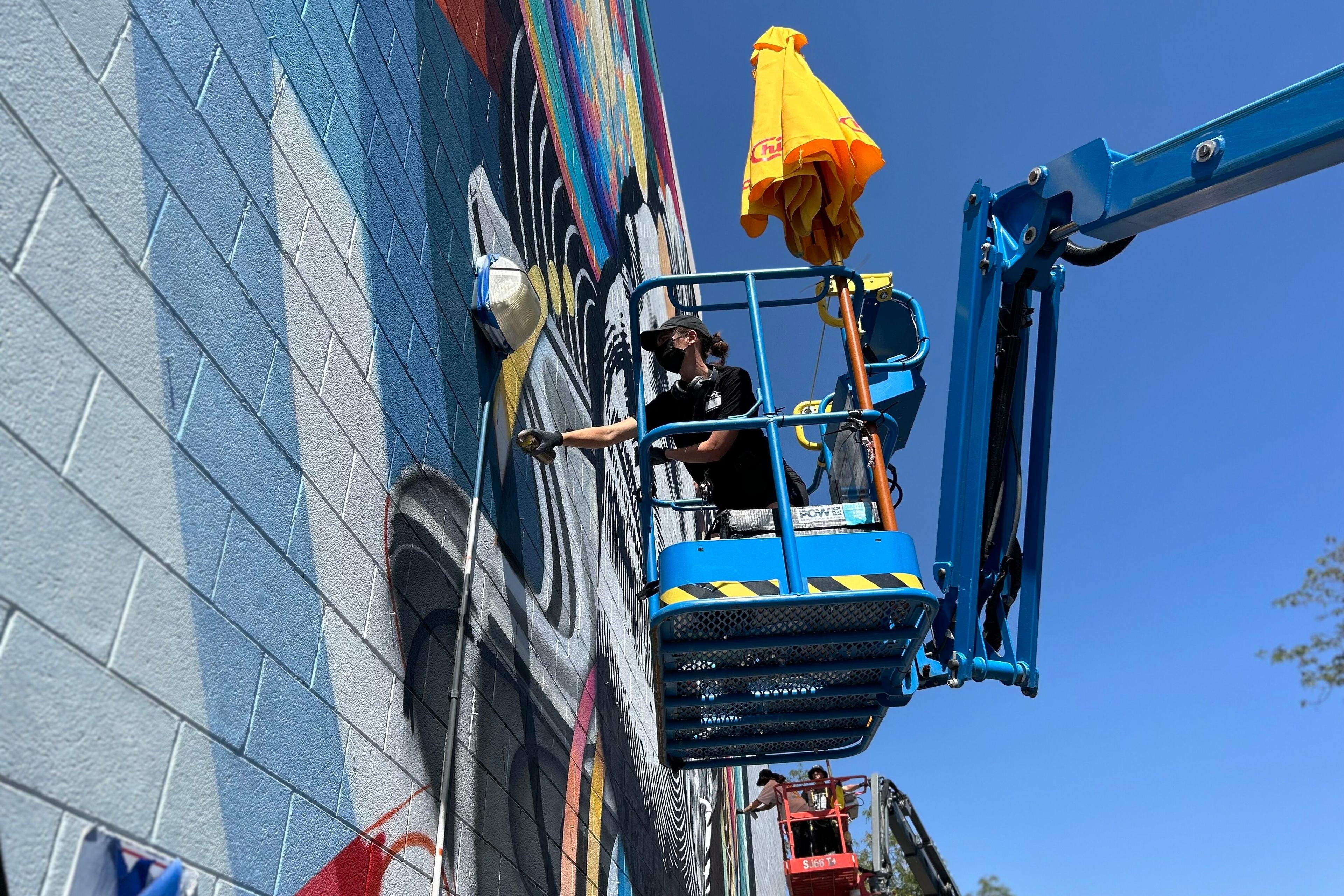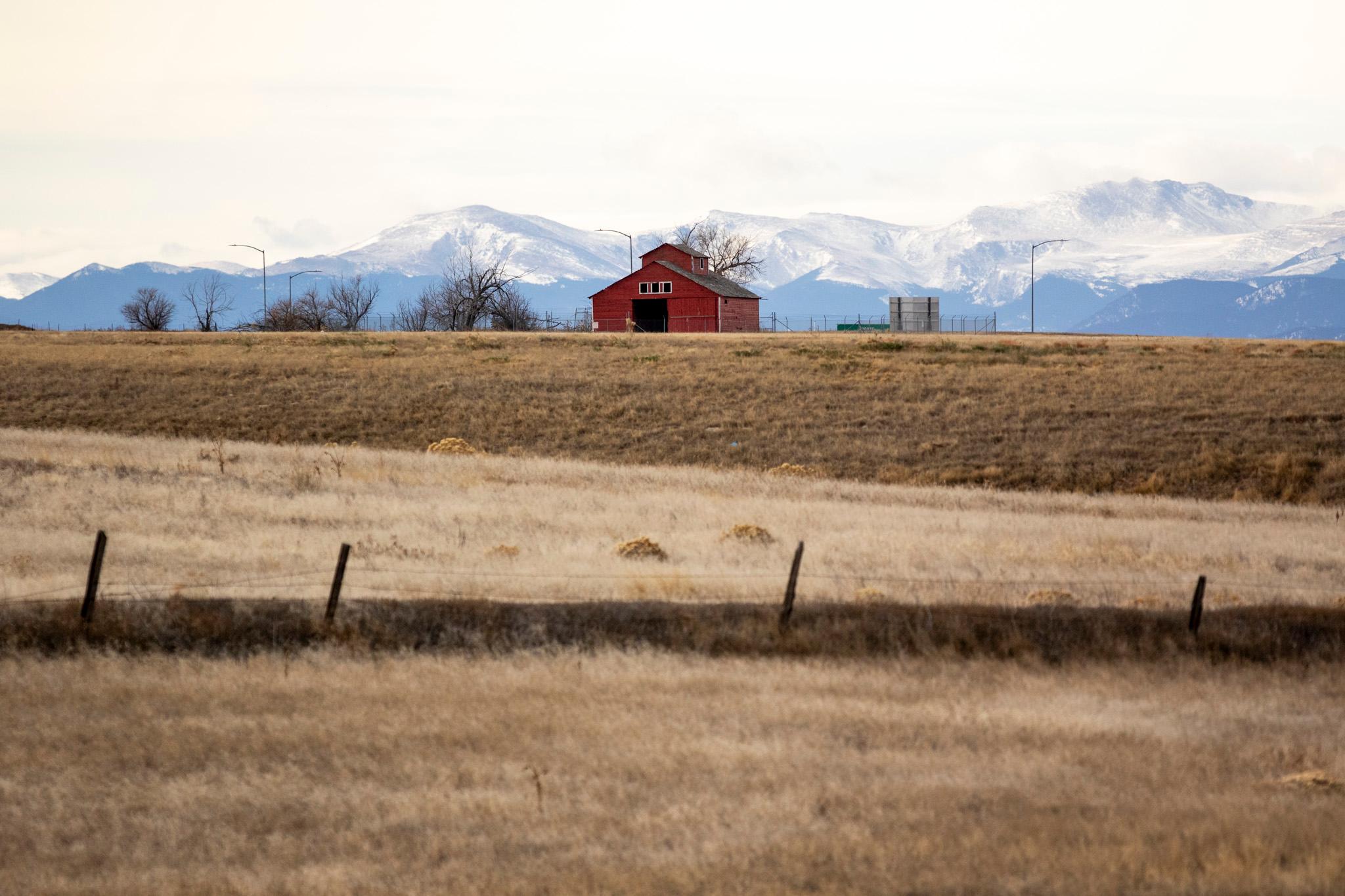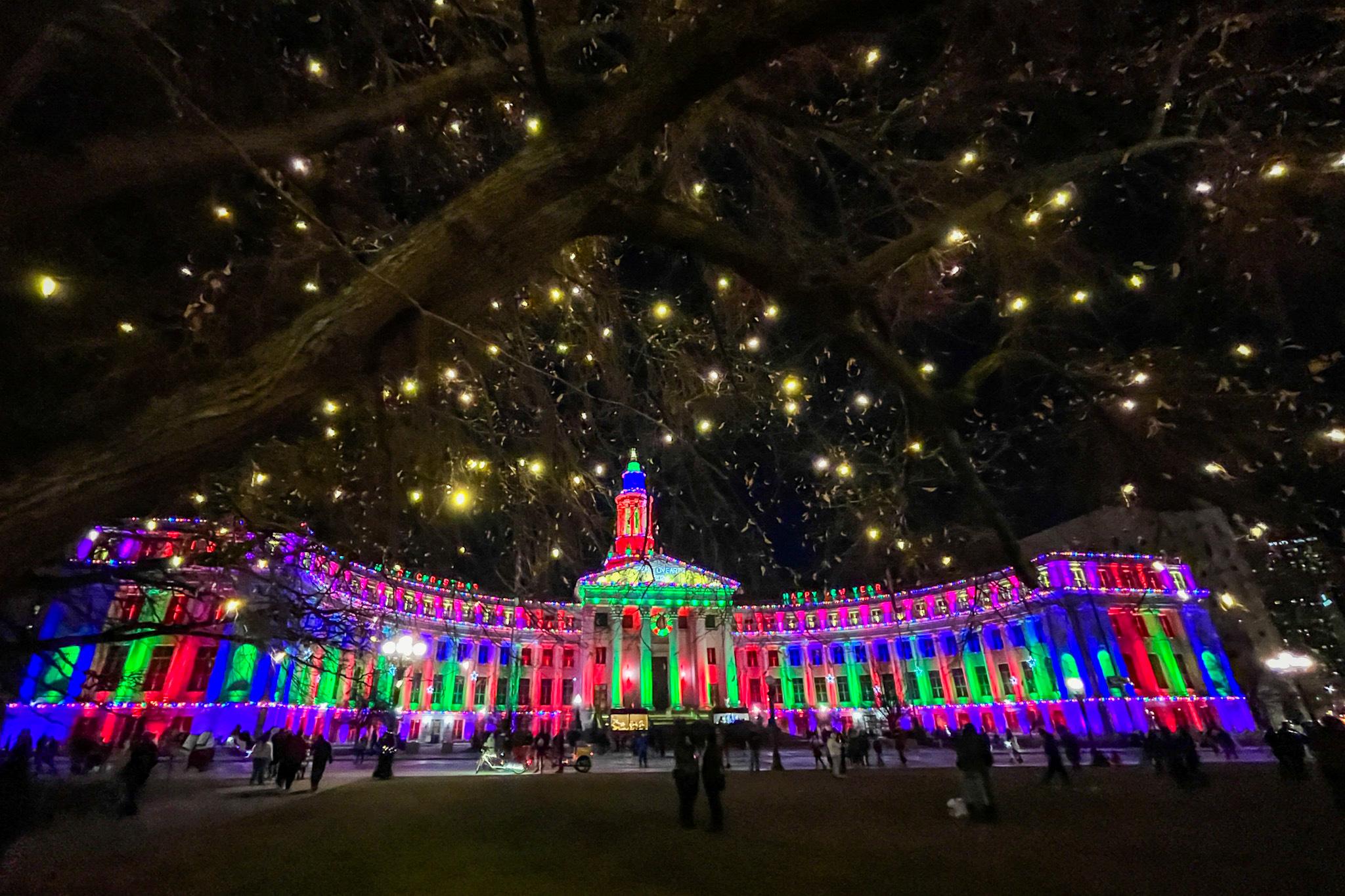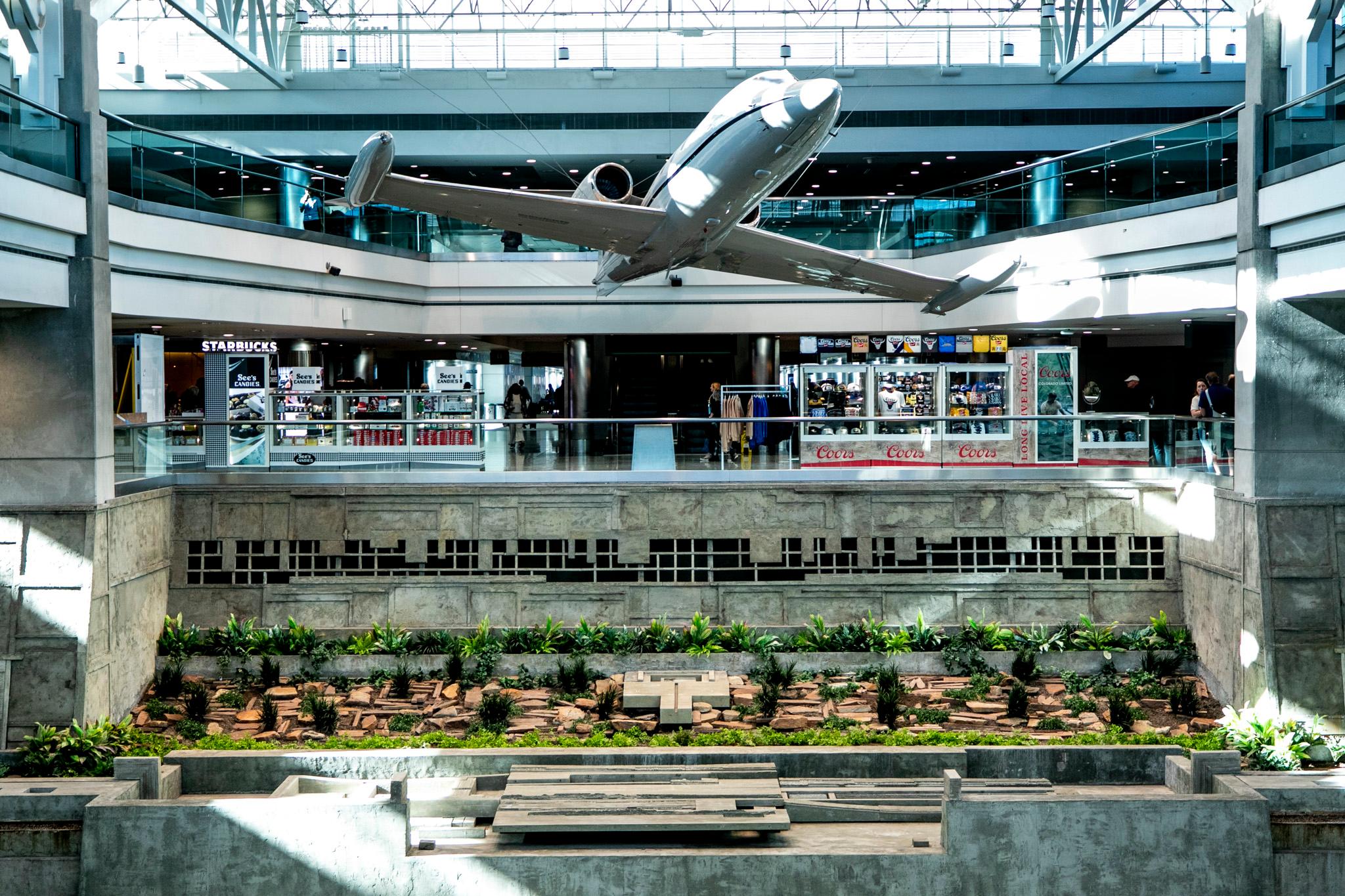For the last few weeks, spray cans and aerial lifts have been scattered outside buildings along a stretch of East Colfax as teams of artists from all over the country gathered to participate in the fifth annual Colfax Canvas Mural Festival.
Among those artists is Danielle Seewalker, a Húŋkpapȟa Lakȟóta citizen from the Standing Rock Sioux Tribe and a Denver-based artist who exploded onto the art scene in the last few years.
Over the last few days, SeeWalker and Cante Eagle Horse — a Denver-based tattooer and artist and member of the Cheyenne River Sioux Tribe — worked together to design a mural on the side of DIA Market in Aurora.
Coming back from a 'crappy experience' with Vail
Earlier this year, the Town of Vail canceled SeeWalker’s residency after someone raised concerns about a piece of artwork she created — unrelated to the residency — commenting on the war in Gaza.
“It was a crappy experience,” SeeWalker said. “It violated First Amendment rights. The piece, 'G is for Genocide,' had nothing to do with my residency, it had nothing to do with Vail. It was something I had done months prior for a different exhibition.”
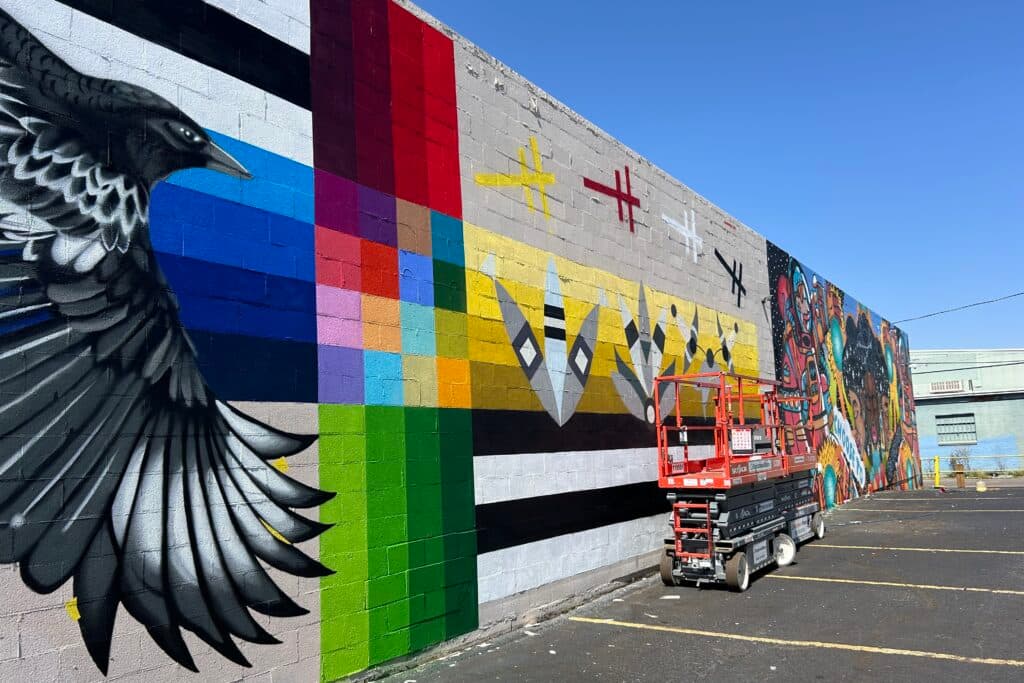
SeeWalker did not only turn down other job opportunities because of the residency with the Town of Vail, but she also says that she was disappointed that she was not given a chance to defend her work.
Aaron Vega, the executive producer of Colfax Canvas, called SeeWalker’s experience earlier this year “gut-wrenching.”
But he believes mural festivals like Colfax Canvas, “do a great job of making sure that artists are seen and heard and have an opinion.”
“Mural festivals that really speak to the community, and work with artists like Danielle and make sure that they are seen and heard, I think, are going to be more valuable in the long run,” Vega said. “Because the truth is when we're all gone … the thing that will be remembered is the art.”
Murals are 'part of the landscape of our lives'
That same sentiment is shared by other mural artists.
“[Murals] become a substantial part of the landscape of our lives,” Denver-based artist Anna Charney said. “...What attracts me to murals is the power to bring artwork to various communities and see immediately how your artwork affects communities or neighborhoods or people individually.”
But unlike other art mediums, painting murals comes with its own unique set of challenges.
Battling Colorado’s unpredictable weather, a small army of wasps, cracking walls, chipped paint, and the occasional heckler are just a few of the challenges the Mango House team has faced over the last few days, but Ally Grimm — a street artist who goes by the pseudonym A.L. Grime — says that this is just a small price to pay for creating art that is accessible to the public.
“Often art gets put behind glass cases or behind closed doors,” A.L. Grime said. “So it's awesome to get to share narratives out in the street and get to really leave our work with communities.”
Mural artists shine a light on the humanity of Venezuelan immigrants
SeeWalker and Cante Eagle Horse are just one of four teams of artists participating in this year’s Colfax Canvas Mural Festival.
Across a parking lot from the DIA Market, three Denver-based artists have spent the last few days painting the side of Mango House, a former JC Penney building that is now a community center for refugees.
“We're painting Maria Corina Machado, who is the opposition leader in Venezuela,” Venezuelan-American artist Ally Grimm, or A.L. Grime, said. “Since Mango House is a refugee resource center, we wanted to paint someone who really represents this idea of going home.”

Grime says that Machado, who is now believed to be in hiding, is a symbol of hope for many Venezuelan refugees.
And while she and the rest of the Mango House artist team — ILL.DES and Anna Charney — started planning the mural before Aurora made national headlines about a "Venezuelan gang takeover," she hopes that the mural provides “a reminder that at the end of the day, we're all people and we all deserve a little bit of humanity.”
Colfax Canvas Mural Festival is on Saturday, Sept. 14, from noon to 5 p.m. at Fletcher Plaza in Aurora, at the intersection of Colfax and Emporia.
